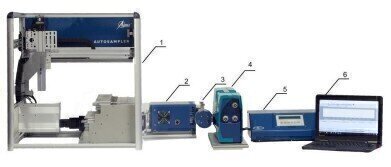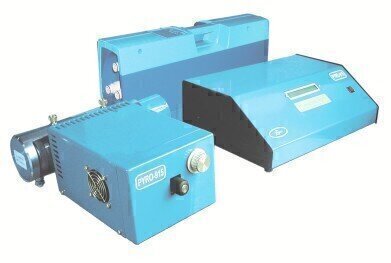Environmental Laboratory
Selectivity + Automation = Highest performance in Hg analysis
Oct 26 2017
Mercury determination in solid samples by thermal decomposition and direct analysis by AAS is a well established technique and is widely used in the laboratories worldwide for fast and accurate analysis of many types of samples starting from soils, sediments to various custom samples. A number of standard methods like, for example, EPA 7473, or ASTM 7622 exist that applies the technique to analysis of a variety of different samples.
Zeeman correction of background absorption by direct analysis allows avoiding a step of mercury collection on gold trap (that in case of trap deterioration can lead to incorrect results) and achieving highest selectivity and precision with real-time determination. This feature is specific to all Lumex mercury analysers. Until recently, however, it was not possible to bring this performance benefit from this advanced technique to a maximum when an overnight shift or other high-throughput analysis was required.
But at the ICMGP-2017 conference in Providence earlier this year Lumex Instruments has presented a robotic sampler for its Pyro-915+ attachments for solid samples that fixes this bottleneck and brings performance of direct mercury analysis to a new level. The modular setup creates an opportunity for further reduction of costs per analysis (already low due to absence of any reagents or carrier gases).
The sampler can handle up to 75 sample ladles with samples that are automatically inserted into the first chamber of the atomiser, where the sample is heated at a temperature of 200 – 800°C (depending on the operation mode). The mercury compounds are evaporated and partially dissociated, forming elemental mercury. All the gaseous products formed are transported into the second chamber of the atomiser by a mercury-free filtered ambient air. Mercury compounds are totally dissociated and the organic matrix of the sample is burnt out. Downstream from the atomizer the air flow enters the analytical cell heated up to 700°C, and the mercury atoms are detected by RA-915+/915M analyser.
The RAPID software monitors and recognizes mercury release from the sample and adjusts automatically for optimal decomposition temperature profile representing a new advance in handling high mercury content by automatic temperature profile adjustment and expanding the dynamic range of determined concentrations. With the linear range of calibration being more than four orders of magnitude, it makes possible to analyse samples with unknown mercury content from a few ppb up to hundreds of ppm.
The sampler is compatible with earlier versions of Pyro-915+ attachment and is yet another brick in the multi-functional modular mercury detection system based on RA-915M analyser.
One can get a first impression on the operation of the new device from a short clip.
For more information please us at our website or contact us by email please click here.
Digital Edition
IET 34.2 March 2024
April 2024
Gas Detection - Biogas batch fermentation system for laboratory use with automatic gas analysis in real time Water/Wastewater - Upcycling sensors for sustainable nature management - Prist...
View all digital editions
Events
Apr 30 2024 Melbourne, Australia
Apr 30 2024 Birmingham, UK
May 03 2024 Seoul, South Korea
May 05 2024 Seville, Spain
May 06 2024 Minneapolis, MN, USA



















